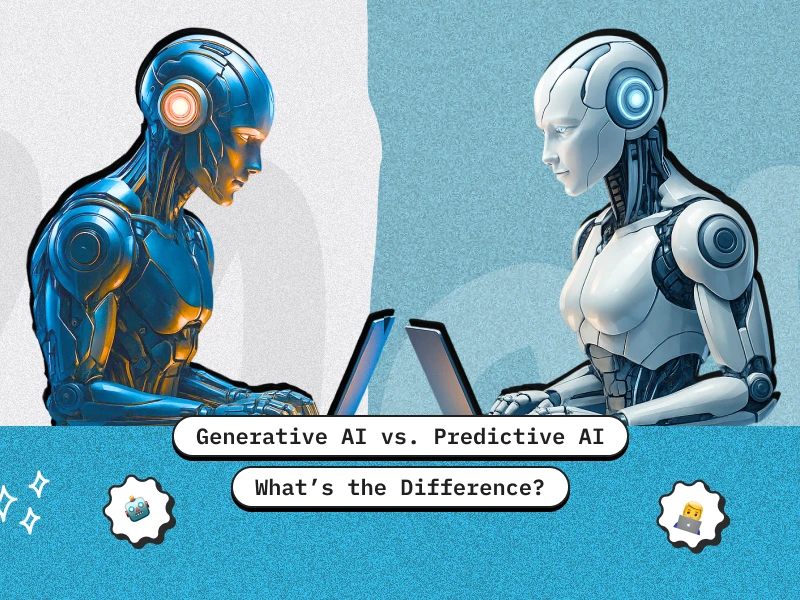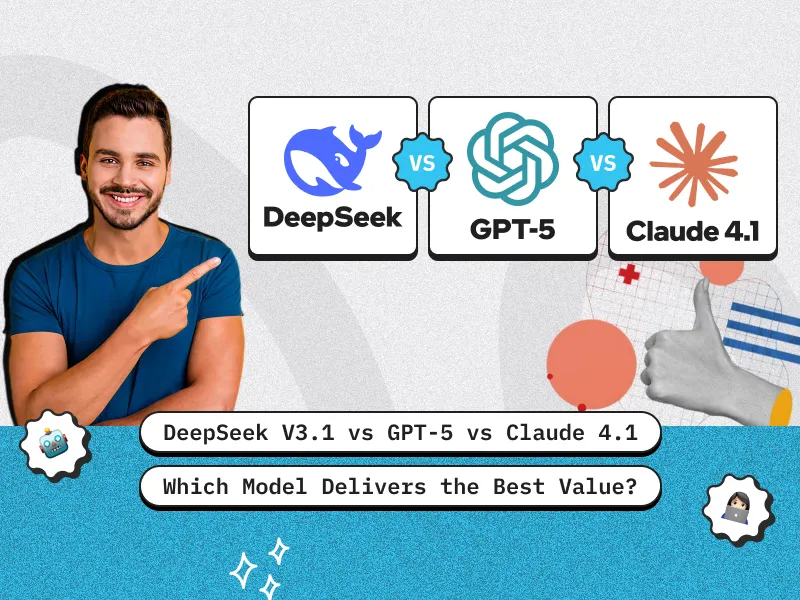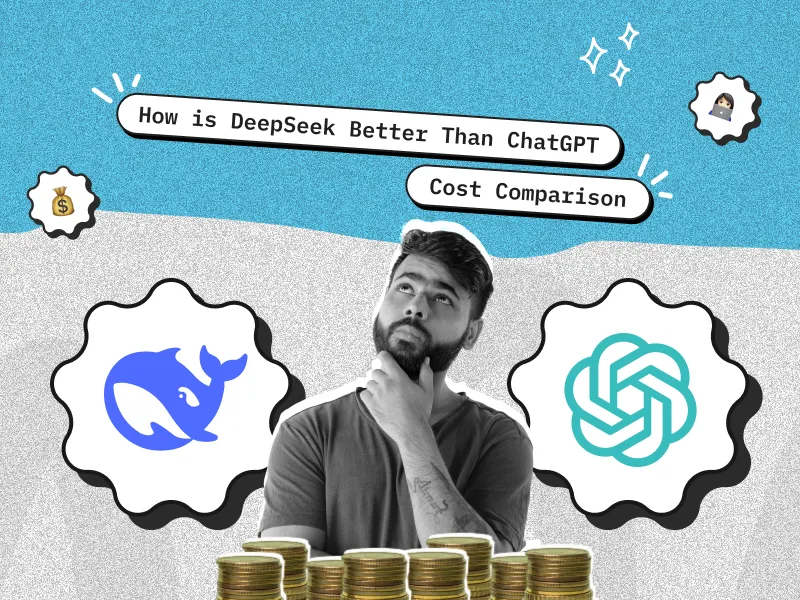TL;DR
- Predictive AI analyzes historical data to forecast future events, enabling smarter decisions in areas like finance, marketing, and supply chain.
- Generative AI creates new content such as text, images, or code, and is ideal for automating content, enhancing creativity, and scaling user engagement.
- The main difference lies in their output: Predictive AI forecasts, while Generative AI creates.
- Businesses should choose based on goals—predictive AI for decision-making, generative AI for content automation—or even better, combine both for full-scale AI transformation.
- Creole Studios offers tailored AI development solutions to help businesses harness the right type of AI based on their specific needs.
Introduction
Artificial Intelligence (AI) is no longer a futuristic concept—it’s deeply embedded in business processes across industries. But as organizations rush to integrate AI into their operations, confusion often arises between two powerful branches: Generative AI vs Predictive AI.
While both rely on data and advanced algorithms, their functions, goals, and applications are fundamentally different. In this blog, we’ll break down what each of these AI types does, where they overlap, and—most importantly—which one is right for your business.
What is Generative AI?
Definition and Key Capabilities
Generative AI is designed to create new content or data. It uses advanced neural networks like transformers (e.g., GPT, DALL·E, Stable Diffusion) to generate human-like text, realistic images, videos, code, and more.
Where predictive AI looks into the future based on the past, generative AI builds entirely new possibilities.
Advantages of generative AI
- Enables creative automation at scale
- Enhances personalization in user experience
- Saves time and cost on content production
- Useful across industries like marketing, design, and customer support
Disadvantages of generative AI
- Can produce biased or inaccurate outputs
- Requires large, diverse datasets for training
- Often lacks explainability or transparency
- May create copyright or ethical concerns
How Generative AI Models Function
- Trained on massive datasets (structured and unstructured).
- Learns grammar, context, tone, style, or design patterns.
- Outputs content that mimics human creativity.
To understand how these models work at a deeper technical level, explore this guide on Generative AI Models.
Practical Applications of Generative AI Across Industries
- Marketing: Automated blog writing, product descriptions, social media content.
- Design: UI mockups, product visualization, creative art.
- Software Development: Code generation, debugging.
- Customer Support: AI chatbots that generate dynamic responses.
If you’re looking to explore practical solutions, check out some of the leading Generative AI Tools used by businesses today.
What is Predictive AI?
Definition and Core Objective
Predictive AI refers to models that analyze historical data to forecast future outcomes. It uses statistical techniques, machine learning algorithms, and pattern recognition to make data-driven predictions.
Advantages of predictive AI
- Helps in proactive decision-making
- Improves operational efficiency
- Enables risk mitigation
- Enhances customer targeting through data segmentation
Disadvantages of predictive AI
- Dependent on high-quality, structured historical data
- Performance declines with changing market trends or behaviors
- Limited to known patterns—it can’t generate new content
- May struggle with unstructured or incomplete data
How Predictive AI Works
At its core, predictive AI focuses on:
- Identifying trends and patterns in existing datasets.
- Applying algorithms such as regression, classification, or time series analysis.
- Providing actionable insights—such as the likelihood of customer churn or demand for a product.
Real-World Examples of Predictive AI in Action
- Finance: Credit scoring and fraud detection.
- Retail: Inventory and demand forecasting.
- Healthcare: Predicting disease outbreaks or patient readmission.
- Marketing: Customer segmentation and behavioral targeting.
Generative AI vs Predictive AI: Key Differences
If you’re still asking, “What is the difference between generative AI and predictive AI?” — this section will clear things up.
| Feature | Predictive AI | Generative AI |
| Goal | Forecasting future outcomes | Creating new content/data |
| Input Type | Historical structured data | Large volumes of structured + unstructured data |
| Output | Probabilities, classifications, scores | Text, images, video, code, etc. |
| Techniques Used | Regression, classification, time series | Transformers, GANs, diffusion models |
| Primary Use Cases | Business intelligence, decision support | Content creation, design, automation |
Objective: Prediction vs. Creation
- Predictive AI supports data-driven planning.
- Generative AI powers content-driven innovation.
Data Requirements and Output Type
Predictive models depend on clean, labeled, structured datasets, while generative models thrive on a diverse range of training data, including text, images, and video.
Technologies and Models Used
- Predictive AI: Logistic regression, random forests, gradient boosting.
- Generative AI: GPT, BERT, GANs, LLaMA, DALL·E, Mistral.
Choosing the Right AI for Your Business
When Predictive AI Makes More Sense
Predictive AI is the ideal choice when your business objectives revolve around anticipating future outcomes, optimizing operations, and minimizing risks. You should consider predictive models if your focus includes:
- Forecasting key business metrics such as revenue, customer churn rates, inventory demand, or financial performance based on historical data patterns.
- Enhancing operational efficiency by leveraging data-driven insights to improve resource allocation, supply chain management, or workforce planning.
- Implementing risk management strategies, such as fraud detection, credit scoring, or early warning systems that support proactive decision-making.
When Generative AI is the Smarter Choice
Generative AI is most suitable for organizations looking to automate creative tasks, deliver personalized experiences at scale, or rapidly prototype new content and designs. It’s especially useful if your goals include:
- Automating large-scale content production, including marketing copy, product descriptions, customer communications, or even technical documentation.
- Generating visual assets for advertising campaigns, website design, packaging mockups, or social media branding—without relying solely on manual graphic design efforts.
- Delivering personalized customer experiences, such as tailored email campaigns, chatbot responses, or dynamic landing pages, powered by AI-generated content.
Can You Combine Both Approaches?
Absolutely—and doing so can unlock exponential value. Businesses are increasingly adopting hybrid AI strategies that integrate both predictive and generative capabilities. Here’s how they can work together:
- Use Predictive AI to analyze customer behavior and anticipate future needs or preferences.
- Then, deploy Generative AI to automatically craft personalized messages, offers, or visual content tailored to those predicted behaviors.
This combination is especially powerful in industries like eCommerce, EdTech, SaaS, and Healthcare, where both foresight and customization are key drivers of engagement, retention, and revenue growth.
Predictive and Generative AI in the Real World
Case Studies from Finance, Retail, and Healthcare
- Banking: Predictive models flag suspicious transactions, while generative AI creates intelligent customer support scripts.
- Retail: Predictive AI forecasts shopping behavior; generative AI writes product descriptions in bulk.
- Healthcare: Predictive AI identifies at-risk patients; generative AI creates treatment summaries or discharge instructions.
Synergistic AI Strategies for Maximum ROI
Forward-thinking companies are now:
- Using predictive AI to guide strategy,
- And generative AI to execute outputs at scale.
This end-to-end transformation—from analysis to action—is where businesses gain a true competitive edge.
How Creole Studios Helps You Implement the Right AI
Whether you need a data-driven model to optimize performance or a content-generating tool to scale up output, Creole Studios delivers both. As a trusted Generative AI Development Company, we offer:
End-to-End AI Strategy & Development
We help you identify whether predictive or generative AI fits your current tech stack and future roadmap.
Custom-Built Solutions for Generative and Predictive Models
From training custom LLMs to building predictive dashboards, our solutions are tailor-made to meet your unique needs.
Start with a Free Consultation
Not sure which direction to take? Let’s talk. Our experts can help you align AI capabilities with business outcomes.
👉 Start Your AI Journey With Creole Studios
Conclusion
In summary, while Predictive AI empowers businesses to make informed decisions through data analysis and forecasting, Generative AI opens the door to scalable content creation and personalized user experiences. Choosing between the two depends entirely on your business goals—whether you’re focused on optimization or innovation. However, the most impactful results often come from combining both technologies to build intelligent, adaptive systems. If you’re looking to implement advanced AI capabilities tailored to your industry needs, Creole Studios offers expert Generative AI Development Services that help you harness the full potential of modern AI for sustainable growth.
FAQs: Generative AI vs Predictive AI
1. What is the main difference between Generative AI and Predictive AI?
Generative AI is designed to create new content like text, images, or code, whereas Predictive AI forecasts future outcomes based on historical data. In short, Generative AI creates, and Predictive AI predicts.
2. Which AI type is better for business applications—Predictive or Generative?
It depends on your goals. Predictive AI is ideal for data-driven forecasting and decision-making, while Generative AI excels in automating content creation and enhancing customer interactions. Many businesses benefit from combining both.
3. Can Generative and Predictive AI work together?
Yes. These AI types can complement each other effectively. For instance, predictive AI can identify customer behavior trends, and generative AI can use those insights to create personalized marketing content.
4. What are some real-world examples of Predictive AI?
Examples include sales forecasting, fraud detection in banking, inventory optimization, and predictive maintenance in manufacturing.
5. What are some use cases of Generative AI in business?
Generative AI is used for automated content generation, product design mockups, AI chatbots, email personalization, and even software code generation.











 30 mins free Consulting
30 mins free Consulting 
 11 min read
11 min read 







 Love we get from the world
Love we get from the world 